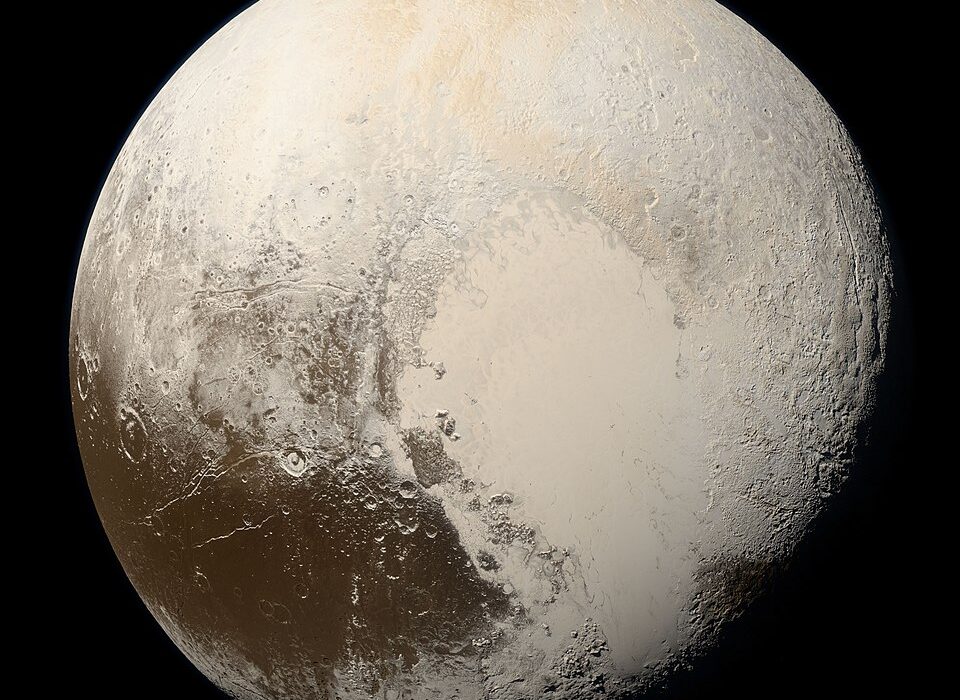Space has always been humanity’s most compelling frontier. For decades, it was the exclusive domain of governments, with organizations like NASA pioneering the impossible: sending men to the Moon, launching robotic explorers to the planets, and establishing the International Space Station. But in the 21st century, the landscape has changed. A new player has entered the stage—not another nation, but a company. SpaceX, led by the ambitious and unpredictable Elon Musk, has transformed spaceflight from a state-sponsored operation into a competitive commercial industry.
Today, the question is no longer just about rockets and astronauts; it’s about vision, ideology, and the future of space exploration itself. Is the future of humanity among the stars best secured by public institutions like NASA, with decades of experience, scientific rigor, and methodical process? Or is it in the hands of private innovators like SpaceX, who promise speed, disruption, and dreams of interplanetary colonization?
NASA and SpaceX aren’t exactly enemies, and they often collaborate—but make no mistake: a new space race is underway. It’s a race not just to the Moon or Mars, but to define the trajectory of human spaceflight for the next hundred years.
NASA: The Pioneering Giant
Since its founding in 1958, NASA has been synonymous with the American space program. Born in the heat of the Cold War and the space race against the Soviet Union, NASA embodied the American drive to innovate, explore, and lead. Its early victories were historic: Alan Shepard becoming the first American in space, John Glenn orbiting Earth, and, of course, Neil Armstrong taking that “one small step” onto the Moon in 1969.
NASA’s legacy is vast. It built the Space Shuttle, enabling reusable spaceflight decades before private companies even attempted it. It has landed rovers on Mars, sent spacecraft into interstellar space, and established orbital telescopes that revolutionized our view of the universe. The agency’s scientific contributions have shaped everything from climate science to medical technology.
But like many large government organizations, NASA has not been immune to criticism. Its budget has often been at the mercy of politics. Major programs like the Shuttle and the Constellation Program were plagued by delays and cost overruns. Risk aversion, bureaucracy, and shifting presidential directives often hampered long-term planning. By the early 2000s, after the tragic Columbia disaster and the Shuttle program’s retirement, NASA found itself at a crossroads.
Enter SpaceX.
SpaceX: The Disruptive Upstart
Founded in 2002 by Elon Musk, SpaceX had an audacious goal: make space travel cheaper, more reliable, and eventually make humans a multi-planetary species. Musk believed that humanity faced existential threats on Earth—climate change, overpopulation, war, and even asteroid impacts. To survive, he argued, we must become a spacefaring civilization.
At first, few took SpaceX seriously. Musk had made his fortune from PayPal and was seen as just another eccentric tech billionaire with grand ambitions. His early rockets failed repeatedly. But in 2008, the company made history by becoming the first privately funded organization to reach Earth orbit. Just two years later, NASA awarded SpaceX a major contract under its Commercial Orbital Transportation Services (COTS) program—a turning point for both entities.
Since then, SpaceX has shattered expectations. Its Falcon 9 rocket became a workhorse, launching satellites, cargo, and even astronauts into space. More impressively, the company achieved what had long been a dream: landing rockets back on Earth and reusing them. This innovation has driven down costs dramatically and changed the economics of spaceflight.
But Musk’s ambitions don’t stop at Earth orbit. His long-term goal is Mars. Through the development of Starship, a massive fully reusable launch system, SpaceX aims to send the first humans to Mars within the next decade. For Musk, this isn’t science fiction—it’s a timeline.
Different Philosophies, Different Cultures
At the heart of the NASA vs. SpaceX rivalry are fundamentally different philosophies.
NASA operates within the public trust. Its missions are carefully planned, vetted, and regulated. Safety is paramount. It follows a rigorous engineering and testing protocol, often stretching timelines but ensuring reliability. Its budget is public and subject to political oversight. For better or worse, it represents the cautious guardian of the taxpayer’s investment in space.
SpaceX, on the other hand, embraces risk. The company’s mantra—“fail fast, learn faster”—is evident in its explosive test campaigns. It will launch uncrewed prototypes with the full expectation they may crash. To the outside world, these explosions may look like disasters, but internally they are data-rich learning opportunities. This approach has led to rapid innovation, allowing SpaceX to outpace competitors and even NASA itself in some areas.
The cultural divide between NASA and SpaceX is also generational. NASA’s engineers often come from decades of government and military experience. SpaceX recruits from Silicon Valley and elite engineering schools, where agility and ambition are prized. Meetings at NASA are formal, hierarchical; at SpaceX, Musk might walk into a hangar and directly challenge the assumptions of junior engineers.
Despite these differences, the two often work side by side.
Collaboration Over Competition—For Now
NASA and SpaceX are not entirely rivals; in many ways, they are partners. NASA has provided funding, technical oversight, and even contracts that helped SpaceX survive its early days. The agency took a calculated risk by entrusting a private company with launching American astronauts—a role it once held exclusively.
The Crew Dragon spacecraft, built by SpaceX, is now regularly ferrying astronauts to the International Space Station under NASA’s Commercial Crew Program. This partnership has been remarkably successful, restoring America’s independent access to orbit after nearly a decade of reliance on Russian Soyuz rockets.
NASA’s Artemis program, which aims to return humans to the Moon, also involves SpaceX. In 2021, the agency selected SpaceX’s Starship to serve as the Human Landing System for the Moon mission. This was a controversial choice, given the company’s relative youth and the unproven nature of Starship—but it reflected SpaceX’s undeniable momentum.
However, collaboration does not eliminate competition. As SpaceX grows more capable and self-sufficient, the question arises: does it still need NASA? And can NASA keep up?
Cost and Efficiency: A Stark Contrast
One of the starkest contrasts between NASA and SpaceX lies in cost efficiency. NASA’s traditional programs have often been incredibly expensive. The Space Shuttle cost billions annually. The new Space Launch System (SLS)—NASA’s flagship rocket for deep space missions—has cost over $20 billion to develop and nearly $2 billion per launch.
Compare that to SpaceX’s Falcon 9, which launches for under $70 million and is partially reusable. Starship, once operational, aims to reduce launch costs to under $10 million—an order-of-magnitude shift in affordability.
This cost disparity isn’t just about saving money. It changes the game entirely. Lower launch costs mean more missions, more experimentation, faster learning curves, and broader participation. SpaceX’s pricing has already undercut competitors, forcing other nations and companies to rethink their approach.
NASA, constrained by political oversight and legacy contractors, cannot match SpaceX’s speed or cost-efficiency. But it can still offer something SpaceX cannot: experience, credibility, and deep scientific expertise.
The Race to the Moon and Mars
The next great milestones in space are clear: a return to the Moon and the first human landing on Mars. NASA’s Artemis program plans to land astronauts on the Moon’s surface by the mid-2020s, with international and commercial partners. The program will use the SLS rocket, Orion spacecraft, and lunar landers like SpaceX’s Starship.
Meanwhile, SpaceX is pursuing its own timeline. Musk has repeatedly said he hopes to send the first humans to Mars by the late 2020s. Critics say this is wildly optimistic, pointing to the technical, logistical, and ethical challenges involved. Still, even if delayed, the fact that a private company is building interplanetary spacecraft at all is extraordinary.
The Moon may be NASA’s next stop, but Mars is the ultimate prize. Who gets there first—NASA, SpaceX, or some joint mission—will shape not only scientific history but cultural memory for generations.
Risks and Accountability
With great ambition comes great risk. NASA is often criticized for its cautious pace, but that caution comes from tragedy. The Challenger and Columbia disasters scarred the agency and reminded the world that spaceflight is unforgiving.
SpaceX, in contrast, has embraced a faster, risk-tolerant approach. Its test vehicles have exploded spectacularly. While no lives have been lost under SpaceX’s watch, critics worry that the company may push too hard, too fast. Crewed missions require a different level of scrutiny than cargo flights or test hops.
NASA, as a public agency, is accountable to citizens, Congress, and international partners. SpaceX is accountable to its investors and its founder’s vision. As the company takes on more crewed missions and high-stakes objectives, questions about safety oversight, transparency, and ethical responsibility will grow louder.
The Bigger Picture: Humanity’s Place in Space
The rivalry between NASA and SpaceX is not just a matter of budget lines and rocket launches. It represents two competing narratives about humanity’s future in space.
NASA represents continuity, collaboration, and scientific exploration. It sees space as a global commons, best explored through international cooperation, long-term research, and shared knowledge. Its missions are slow but deliberate, building a foundation of data and infrastructure for the generations ahead.
SpaceX represents disruption, ambition, and a kind of capitalist colonization of space. Musk’s vision of a Mars city, built and owned by a private company, raises philosophical and ethical questions. Who governs Mars? What rights will settlers have? What laws will apply? SpaceX may not have all the answers, but it’s asking the questions by its very actions.
These two paths are not mutually exclusive. In fact, a balanced future may depend on both: NASA’s wisdom and structure, paired with SpaceX’s drive and innovation.
Conclusion: Toward the Stars, Together or Apart
NASA and SpaceX are two sides of the same cosmic coin. One is the seasoned pilot, the other a daring explorer. One maps the stars with precision; the other races toward them with fire.
In the coming decades, we may see both organizations put astronauts on the Moon, rovers on Mars, and even habitats in orbit. Whether they do it side by side or in friendly competition, the result is a net gain for humanity.
The space race of the 20th century was between nations. The space race of the 21st may be between ideologies—public vs. private, cautious vs. bold, collective vs. individual. But if this race brings us closer to the stars, perhaps it doesn’t matter who crosses the finish line first.
Because in the end, space belongs not to any one agency, company, or billionaire—but to all of us.






